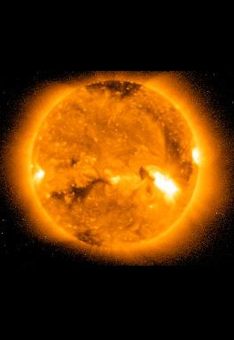NOAA/WDS Paleoclimatology - Paleo-pCO2 Database Atlantic ODP925 40 Million Year Alkenone and CO2 Data
This archived Paleoclimatology Study is available from the NOAA National Centers for Environmental Information (NCEI), under the World Data Service (WDS) for Paleoclimatology. The associated NCEI study type is Forcing. The data include parameters of paleoceanography with a geographic location of North Atlantic Ocean. The time period coverage is from 38490000 to 20000 in calendar years before present (BP). See metadata information for parameter and study location details. Please cite this study when using the data.
- Cite as: Zhang, Y.G.; Pagani, M.; Liu, Z.; Bohaty, S.M.; DeConto, R.M. (2018-08-11): NOAA/WDS Paleoclimatology - Paleo-pCO2 Database Atlantic ODP925 40 Million Year Alkenone and CO2 Data. [indicate subset used]. NOAA National Centers for Environmental Information. https://doi.org/10.25921/n8mp-ch79. Accessed [date].
- Please refer to Credit tab for full citation information.
- doi:10.25921/n8mp-ch79
- noaa-forcing-24850
- NCEI DSI 1200_02
- NCEI DSI 1200_01
noaa-forcing-24850
| Search Data |
|
| Download Data |
|
| Distribution Formats |
|
| Ordering Instructions | Contact NCEI for other distribution options and instructions. |
| Distributor | NOAA National Centers for Environmental Information
ncei.info@noaa.gov |
| Dataset Point of Contact | NOAA National Centers for Environmental Information
ncei.info@noaa.gov |
| Dataset Point of Contact | Data Center Contact
NOAA World Data Service for Paleoclimatology 828-271-4800 paleo@noaa.gov |
| Coverage Description | Date Range: 38490000 cal yr BP to 20000 cal yr BP; |
| Time Period | -38488050 to -18050 |
| Spatial Bounding Box Coordinates |
N: 4.204133
S: 4.204133
E: -43.48915
W: -43.48915
|
| Spatial Coverage Map | |
| General Documentation |
|
| Associated Resources |
|
| Publication Dates |
|
| Data Presentation Form | Digital table - digital representation of facts or figures systematically displayed, especially in columns
|
| Dataset Progress Status | Complete - production of the data has been completed |
| Data Update Frequency | Data update frequency not available |
| Supplemental Information |
STUDY NOTES: Alkenone data and estimated atmospheric pCO2 data from core ODP925, Western Equatorial Atlantic, for the past 40 million years
ABSTRACT SUPPLIED BY ORIGINATOR: The alkenone-pCO2 methodology has been used to reconstruct the partial pressure of ancient atmospheric carbon dioxide (pCO2) for the past 45 million years of Earth's history (Middle Eocene to Pleistocene epochs). The present long-term CO2 record is a composite of data from multiple ocean localities that express a wide range of oceanographic and algal growth conditions that potentially bias CO2 results. In this study, we present a pCO2 record spanning the past 40 million years from a single marine locality, Ocean Drilling Program Site 925 located in the western equatorial Atlantic Ocean. The trends and absolute values of our new CO2 record site are broadly consistent with previously published multi-site alkenone-CO2 results. However, new pCO2 estimates for the Middle Miocene are notably higher than published records, with average pCO2 concentrations in the range of 400-500 ppm. Our results are generally consistent with recent pCO2 estimates based on boron isotope-pH data and stomatal index records, and suggest that CO2 levels were highest during a period of global warmth associated with the Middle Miocene Climatic Optimum (17-14 million years ago, Ma), followed by a decline in CO2 during the Middle Miocene Climate Transition (approx. 14 Ma). Several relationships remain contrary to expectations. For example, benthic foraminiferal d18O records suggest a period of deglaciation and/or high-latitude warming during the latest Oligocene (27-23 Ma) that, based on our results, occurred concurrently with a long-term decrease in CO2 levels. Additionally, a large positive d18O excursion near the Oligocene-Miocene boundary (the Mi-1 event, approx. 23 Ma), assumed to represent a period of glacial advance and retreat on Antarctica, is difficult to explain by our CO2 record alone given what is known of Antarctic ice sheet history and the strong hysteresis of the East Antarctic Ice Sheet once it has grown to continental dimensions. We also demonstrate that in the Neogene with low CO2 levels, algal carbon concentrating mechanisms and spontaneous biocarbonate-CO2 conversions are likely to play a more important role in algal carbon fixation, which provides a potential bias to the alkenone-pCO2 method. |
| Purpose | Records of changes in solar irradiance, volcanic aerosols, atmospheric trace gases, and other properties thought to influence climate in the past. Parameter keywords describe what was measured in this dataset. Additional summary information can be found in the abstracts of papers listed in the dataset citations. |
| Dataset Citation |
|
| Cited Authors |
|
| Originators |
|
| Publishers |
|
| Theme keywords | Global Change Master Directory (GCMD) Science Keywords
|
| Data Center keywords | Global Change Master Directory (GCMD) Data Center Keywords
|
| Place keywords |
|
| Use Constraints |
|
| Access Constraints |
|
| Fees |
|
Last Modified: 2024-03-18
For questions about the information on this page, please email: ncei.info@noaa.gov
